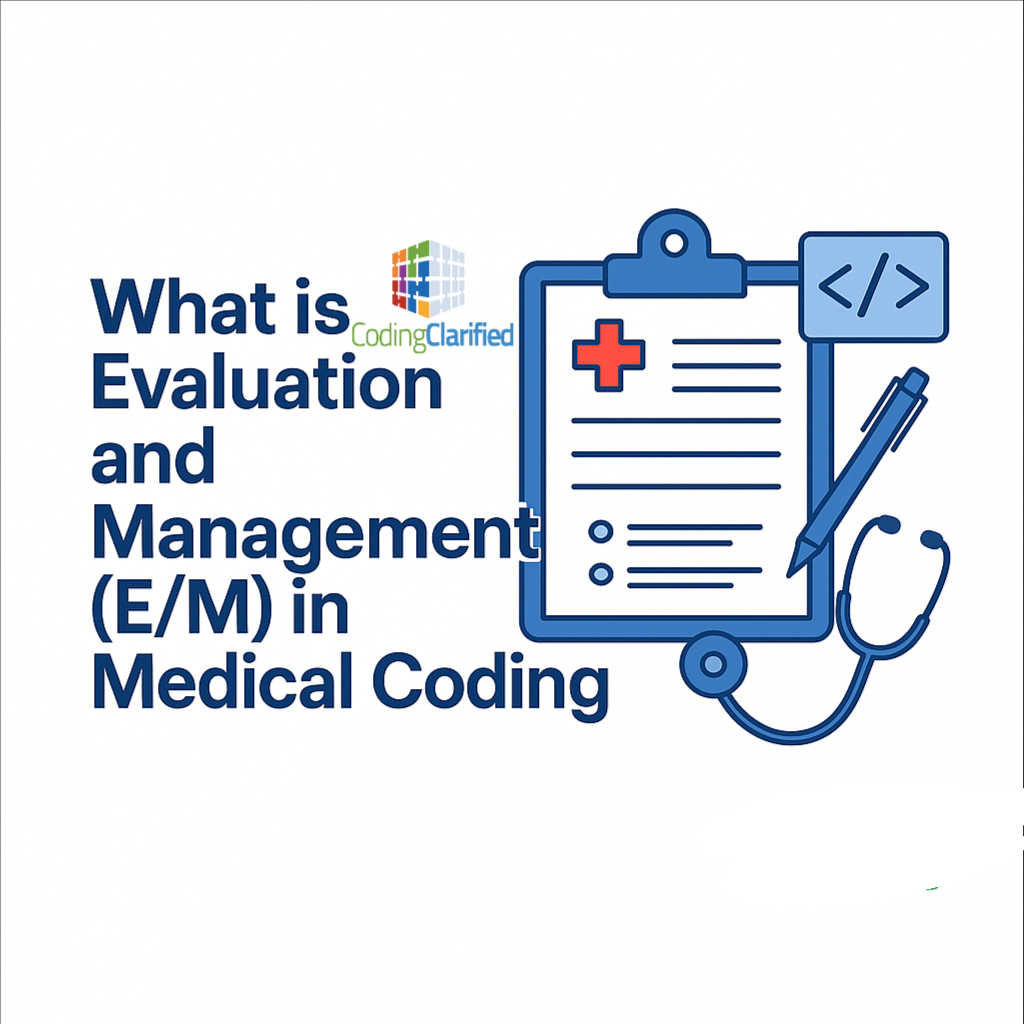What is Evaluation and Management (E/M) in Medical Coding?
Understanding E/M coding is critical for accuracy in medical billing, reimbursement, and compliance. So what is evaluation and management (E/M) in medical coding? These services are one of the most common and essential components in medical coding. These codes are used to document and bill encounters between healthcare providers and patients when no surgical procedure is performed.
What Are E/M Codes?
E/M codes are a category of CPT® (Current Procedural Terminology) codes ranging from 99202 to 99499, used to describe the work involved in evaluating and managing a patient’s health. These codes reflect the complexity of a visit, whether it’s an office visit, emergency department visit, hospital observation, or home health consultation.
Key Components of E/M Coding
Historically, E/M code selection was based on three key components:
-
History of the present illness
-
Examination performed by the provider
-
Medical Decision Making (MDM)
However, as of 2021, the AMA revised the guidelines for office/outpatient E/M codes (99202–99215) to focus primarily on:
-
Medical Decision Making, or
-
Total time spent on the encounter (on the date of service)
This update aimed to reduce documentation burden and more accurately reflect the cognitive work of the provider.
Factors That Influence E/M Code Selection
When choosing the correct E/M code, coders must consider:
-
New vs. Established Patient
New patients require more documentation and time, leading to higher-level codes. -
Time
If selected based on time, coders must include total time spent on the date of service (e.g., chart review, patient counseling, coordination of care). -
Medical Decision Making (MDM)
This includes the complexity of diagnosis, amount and/or complexity of data reviewed, and risk to the patient.
Why E/M Coding Matters
Accurate E/M coding ensures:
-
Proper reimbursement for services rendered
-
Compliance with payer and regulatory guidelines
-
Reduced audit risk
-
Quality patient documentation
Tips for Accurate E/M Coding
-
Understand the 2021 AMA Guidelines
Know which encounters require the updated rules and which still use traditional criteria. -
Use Templates and Tools Wisely
Avoid over-documenting or copying forward irrelevant information. -
Audit Regularly
Regular internal audits help catch and correct coding errors before claims are submitted.
AMA CPT E/M https://www.ama-assn.org/system/files/2023-e-m-descriptors-guidelines.pdf
Evaluation and Management (E/M) Coding https://codingclarified.com/e-m-2025/

